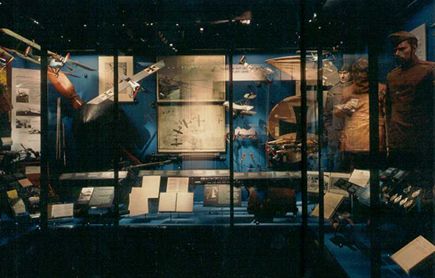
Imperial War Museum
When the World War II exhibit was being planned, fibre optic lighting was a relatively new concept, and at that stage only suitable to deliver the kind of low levels of illumination that are allowed under strict conservation rules. It was soon realised that the properties of glass fibre optics, in their filtration out of harmful UV elements of the light spectrum, made them an incredibly valuable lighting tool in such applications. Fugitive artefacts of mainly organic origin that had until then been relegated to a viewing ambience of Stygian gloom could at last be lit clearly and sensitively.
This museum boasted the first major fibre optic installation in the country, and the first to use lenses and filters to manipulate the light characteristics and to project it effectively across the very substantial display cases.
The track profile that was developed specially for this project is still widely used today, with a vastly-enhanced array of optical lenses and imaging facilities.
Absolute Action was also commissioned to provide fibre optic lighting for the subsequent phases of renovation at the Imperial War Museum, the World War I and The Belsen exhibits.

